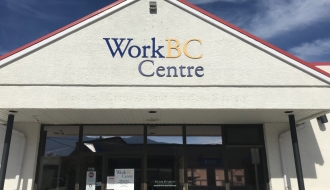Career Overview
Statistical officers and related research support occupations in this group:
- Provide statistical and research support services to a wide range of businesses and organizations
- Conduct statistical routines
- Monitor trends
- Compile data
- Prepare charts, graphs, summaries and reports in support of organizational information needs and research activities
- Employed throughout the private and public sectors
Statistical officers who are also supervisors are included in this unit group.
Job Titles
Duties
Statistical officers and related research support workers perform some or all of the following duties:
- Compile tables, charts, graphs and summarized statistics for integration in research papers and reports
- Process data using statistical software to conduct basic analyses of trends in support of research activities
- Collect, consolidate, cross-tabulate and format data from various sources to prepare draft reports for review by supervisors or researchers
- Assist in collection and tracking of data from monitored use of services and provide information to management and client groups
- May prepare technical documents and monitoring reports on volumetrics and other trend analyses
- May supervise statistical and research support workers
Earnings
Earnings is income that workers receive in exchange for their labour. Depending on the type of employment, earnings can be in the form of wages (hourly), salaries (fixed monthly or annual) or self-employed earnings.
Work Environment
# Workers Employed
545% Employed Full Time
55%Work in this occupation is typically performed in a structured environment, such as an office or school.
Career Pathways
With experience, actuaries may progress to managerial positions in consulting, insurance and finance. They may also be self-employed.
Occupational Interests
It’s important to understand what kinds of occupations align with your interests.
For more about occupational interests visit Skills for the Future Workforce > Characteristics.
Here are the top occupational interest(s) for this career profile:
Education, Training and Skills
- Completion of secondary school is required. A college diploma or undergraduate degree in a social science, commerce, statistics or a related field is usually required
Education programs in B.C.

Top Skills
Every job calls for a certain set of skills. Knowing those skills is the first step in finding a good career fit.
Here, you will find the 10 most relevant workplace skills. Some are more important to achieving success in a certain career than others. These skills may come naturally to you or you may need to gain them through education, training and experience.
See the list of work-related skills below, ranked in order of importance for this career. Check out the list and see if this career matches your skills—take that first step!
Understanding written sentences and paragraphs in work-related documents.
Using mathematics to solve problems.
Using logic and reasoning to identify the strengths and weaknesses of alternative solutions, conclusions or approaches to problems.
Communicating effectively in writing as appropriate for the needs of the audience.
Giving full attention to what other people are saying, taking time to understand the points being made, asking questions as appropriate, and not interrupting at inappropriate times.
Being able to solve novel, ill-defined problems in complex, real-world settings.
Talking to others to share information effectively.
Understanding how new information could be used to solve current and future problems in making decisions.
Considering the relative costs and benefits of potential actions to choose the most appropriate one.
Managing one’s own time and the time of others.
Labour Market Statistics
Discover data, facts and information that have been gathered and analyzed. Learn about the characteristics of the economy and labour market in B.C.
Employment
Find out about employment types and trends by region and industry.
Employment
545Employment by Region







| Region | Employment | % Employment of this Occupation |
|---|---|---|
| Cariboo | 10 | 1.8% |
| Kootenay | 10 | 1.8% |
| Mainland/Southwest | 395 | 72.5% |
| North Coast and Nechako | 0 | 0.0% |
| Northeast | 0 | 0.0% |
| Thompson-Okanagan | 45 | 8.3% |
| Vancouver Island/Coast | 75 | 13.8% |
Labour Market Outlook
The B.C. Labour Market Outlook is a 10-year forecast of the expected supply and demand for labour in the province. It’s usually updated every year. The purpose is to provide British Columbians with the knowledge to make informed decisions on careers, skills training, education and hiring.
Forecasted Job Openings (2024-2034)
180Forecasted Job Openings
Forecasted Employment Growth Rate
Composition of Job Openings
Job Openings by Region (2024-2034)







| Region | Job Openings | Avg. Annual Employment Growth |
|---|---|---|
| Cariboo | Not available | Not available |
| Kootenay | Not available | Not available |
| Mainland/Southwest | 150 | 2.0% |
| North Coast and Nechako | Not available | Not available |
| Northeast | Not available | Not available |
| Thompson-Okanagan | 10 | 1.9% |
| Vancouver Island/Coast | 20 | 1.4% |
Industry Highlights
Learn about the opportunities in B.C.'s major industries, including employment trends, earning potential, locations of work and more.
Forecasted Job Openings by Industry
| Industry | Job Openings (2024-2034) |
|---|---|
| Professional, Scientific and Technical Services | 100 |
| Health Care and Social Assistance | 30 |
| Public Administration | 10 |
| Finance, Insurance and Real Estate | 10 |
| Retail Trade | 10 |
Resources
Resource information is currently not available.







